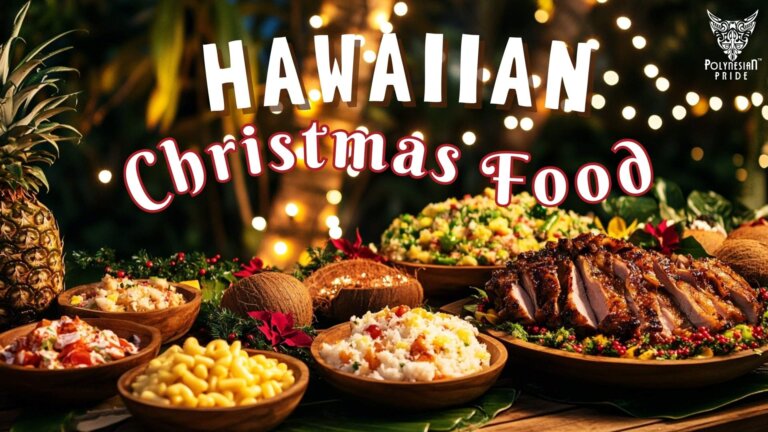Māori Cuisine: Exploring the Authentic Flavors of Aotearoa

The rich and diverse world of Maori cuisine is a reflection of the deep cultural connection between the Maori people and their land, Aotearoa (New Zealand). Imagine attending a feast where the sweet aroma of earthy kumara (sweet potato) mingles with the salty tang of fresh seafood, where traditional hāngi (earth oven) cooking techniques are used to slow-cook succulent meats, and where generations of flavors come together on a single plate. This is the essence of Maori cuisine – it goes beyond just food, offering a deeper understanding and appreciation for the Maori culture and way of life.
In this article, we will take you on a journey through the world of Maori food, exploring its historical origins, key ingredients, unique cooking techniques, and its vital role in preserving Maori cultural traditions. From traditional dishes cooked in an earth oven to modern fusion cuisine, join us as we delve into the vibrant and diverse flavors of Aotearoa.
1. Historical Background and Traditional Ingredients
Historical Background
The rich culinary heritage of Maori cuisine dates back centuries, long before the arrival of Europeans in New Zealand. The Maori people, deeply connected to their land, Aotearoa, developed a sustainable and resourceful diet, utilizing the abundance of natural resources around them.
Traditional Maori Ingredients
Kumara, a sweet potato brought to New Zealand by Polynesian ancestors, became a staple in the Maori diet, symbolizing fertility and abundance. Other root vegetables like taro and yams were also commonly consumed. Fern root, with its high starch content, was another important ingredient.
As skilled hunters and gatherers, the Maori incorporated wild game into their diet, including native birds like moa and kiwi. Seafood, a crucial source of protein and nutrients, includes shellfish, fish, and seaweed, depending on the region and availability.
Cooking Methods
Māori cooking techniques were ingenious and adapted to their environment. The iconic hāngi method involved slow-cooking food in an earth oven, resulting in tender and flavorful meat, vegetables, and bread. Open-fire cooking and preservation techniques like smoking and drying were also employed.
European Influence
European contact brought new ingredients and cooking methods, introducing potatoes, wheat, and sugar to the Maori diet. Pots, pans, and ovens influenced food preparation. Despite these changes, traditional Maori ingredients and cooking methods remain integral to modern Maori cuisine.
2. Maori Cooking Techniques
Maori cooking techniques are steeped in tradition and integral to preserving cultural customs. The most iconic of these methods is hāngi, which we will explore in detail below.
Hāngi
Hāngi is widely regarded as one of the most traditional forms of Maori cooking. As mentioned earlier, this method involves cooking food in an earth oven, resulting in tender and flavorful dishes.

Preparation Process
The preparation for a hāngi feast starts with selecting the right spot for the oven and digging a pit. Stones are then heated over an open fire, and the food is placed in the pit, covered with flax leaves, and buried with earth. The cooking process can take anywhere from two to six hours, depending on the type of food being prepared.

Types of Dishes
Hāngi is used to cook a variety of dishes, including vegetables, meats, and bread. Meat is often wrapped in leaves or cloth before being placed in the pit, while vegetables and bread are placed directly on the hot stones. The result is succulent meat, perfectly cooked vegetables, and deliciously smoky bread.
Rongoā Māori (Traditional Medicine)
Apart from its use in cooking, traditional Maori ingredients play an important role in healing practices. Rongoā Māori is the traditional healing system of the Māori people, which uses native plants and herbs to treat ailments and promote overall well-being.

Use in Cuisine
Many of the herbs and plants used in Rongoā Māori are also commonly used in Māori cuisine. For example, horopito is known for its antibacterial properties and is often used in marinades and rubs for meats. Kawakawa, another popular herb, is used in both cooking and traditional medicine. It has antimicrobial properties and is used in soups, stews, and teas.

Modern Adaptations
While traditional cooking techniques like hāngi remain an integral part of Maori cuisine, they have also been adapted to suit modern times. For example, some restaurants now offer “hāngi pies”, where the meat and vegetables are baked in a pie crust using the hāngi method. This allows for the flavors of a traditional hāngi feast to be enjoyed in a convenient and portable way.

3. Iconic Maori Dishes
Māori cuisine has many iconic dishes that showcase the distinct flavors and techniques of this unique culinary tradition. Let’s take a closer look at some of these dishes.
Hāngi Feast
A hāngi feast is a quintessential Maori experience, showcasing the rich and diverse flavors of traditional cooking methods. A typical hāngi meal consists of meats such as chicken, pork, and lamb, along with vegetables like kumara, potato, and pumpkin. The meat is incredibly tender and succulent, while the vegetables are cooked to perfection, taking on a smoky and earthy flavor.
Boil-Up
Boil-up is a hearty soup made with pork bones, watercress, potatoes, and dumplings. It is a staple dish in Maori households and is often served during gatherings and celebrations. Boil-up is a comforting and wholesome dish, with each ingredient adding its unique flavor to the broth.

Rewena Bread
Rewena bread is a fermented potato bread that has been a staple in Maori cuisine for centuries. Traditionally, it was made by fermenting mashed potatoes with natural yeast for several days before being mixed with flour to make a dough. The bread is then cooked on hot stones or in a hāngi pit, resulting in a soft and fluffy loaf with a slightly sour taste.

Kina (Sea Urchin)
Kina is a delicacy in Maori cuisine, often reserved for special occasions and celebrations. It is harvested from the ocean floor and eaten raw, with its rich and creamy texture likened to that of foie gras. Kina can also be used in sauces and spreads, adding a unique and intense sea flavor to any dish.

Pōhā (Bracken Fern Shoots)
A true delicacy for adventurous palates, pōhā are the fiddleheads of a native New Zealand fern. Traditionally boiled, steamed, or roasted, these tender shoots possess a distinct, slightly bitter taste. Pōhā are often incorporated into salads or served as a side dish, adding a unique textural and flavor element to the meal.

Kānga Wai (Muttonbird Stew)
Hailing from colder regions with a rich muttonbird hunting tradition, kānga wai is a hearty and comforting stew. This dish features tender muttonbird meat simmered in a flavorful broth alongside seasonal vegetables like kūmara (sweet potato), potatoes, and pumpkin. The result is a satisfying and nourishing stew, perfect for a chilly day.

Ika Mata (Raw Fish Salad)
A vibrant and refreshing dish, ika mata showcases the Maori love for fresh seafood. Featuring slivers of raw fish cured in citrus juices like lemon or lime, ika mata boasts a tangy and slightly acidic flavor. The dish is further enhanced with a medley of ingredients like creamy coconut milk, diced onions, chopped chili peppers, and fresh herbs like kūmara leaves. Ika mata is typically served as an appetizer and is a delightful explosion of textures and tastes.

4. Maori Food Culture and Practices
Food plays a significant role in Maori culture and is deeply ingrained in traditional practices and customs. Let’s explore some of the key food-related aspects of Maori society.
Gathering and Hunting
Traditionally, the Maori people followed a seasonal pattern when it came to gathering and hunting for food. For example, certain seafood was only available in specific months. At the same time, birds were often hunted in the winter months when other food sources were scarce. This practice not only ensured the sustainability of resources but also formed an essential part of Maori culture and way of life.
Community and Sharing
Food has always been a communal experience in Maori culture. Many traditional dishes, such as hāngi, are prepared and shared among large groups of people, bringing communities together. Food is also shared during celebrations, ceremonies, and rituals, further strengthening social bonds and relationships.
Festivals and Celebrations
Maori cuisine takes center stage during cultural festivals and celebrations, with food being an integral part of these events. Matariki, the Maori New Year, is a time when traditional hāngi feasts and other traditional dishes are enjoyed. Other celebrations, such as weddings and birthdays, also feature traditional Maori dishes, showcasing the importance of food in Maori society.

5. Contemporary Maori Cuisine
While traditional Maori cuisine remains at the heart of Maori food culture, there has also been a rise in contemporary Maori cuisine. Let’s take a look at some of the trends and changes in modern Maori cuisine.
Modern Chefs and Restaurants
With the rising popularity of Maori cuisine, there has been an emergence of talented Maori chefs and restaurants. These establishments are not only introducing traditional dishes to a wider audience but also offering new and innovative interpretations of Maori flavors.
Fusion Cuisine
Another trend in modern Maori cuisine is the fusion of traditional flavors with other culinary traditions. For example, Pacific Rim cuisine combines Maori ingredients and cooking techniques with those of the Pacific Islands. This fusion of cultures not only creates unique and exciting dishes but also celebrates the shared histories and influences of different communities. Dishes like Seafood Curry with Coconut Milk and Kumara, inspired by the flavors of Southeast Asia, demonstrate the harmonious blend of cultural influences.
Sustainability and Revitalization
As the world moves towards more sustainable practices, there has been a renewed focus on preserving traditional food practices in Maori culture. Efforts are being made to promote conventional methods of gathering and hunting, as well as the use of local and seasonal ingredients. These efforts not only support the preservation of Maori culinary traditions but also promote the sustainability of resources for future generations.
Conclusion
In conclusion, Maori cuisine is a vibrant and diverse culinary tradition that goes beyond just food. It embodies the deep cultural connection between the Maori people and their land, Aotearoa. From its humble origins rooted in traditional methods and ingredients to its evolution and adaptation in modern times, Maori cuisine is a reflection of the rich tapestry of Maori culture. We hope this article has offered a deeper understanding and appreciation for the flavors and customs of Maori cuisine and encourages you to explore this unique and delicious world of food.
Frequently Asked Questions
What is traditional Maori cuisine?
Māori hunted a wide range of birds (such as mutton birds and moa), collected seafood and gathered native ferns, vines, palms, fungi, berries, fruit and seeds.
What is the Māori cooking style?
In traditional hāngī cooking, food such as fish and kumara (sweet potato), were cooked in a pit dug in the ground. Today, pork, lamb, potato, pumpkin and cabbage are also included. Hāngī was traditionally wrapped in flax leaves, but a modern Hāngī is more likely to use mutton cloth, aluminium foil and wire baskets.
What is the national dish of the Maori people?
The hangi is a traditional Maori form of cooking, where food like fish, meat and kumara are smoked in a pit dug into the ground. This ‘earth oven’ is the perfect way to bring people together and cook a feast, and is still used for special occasions around the country
What seafood did Māori eat?
Seafood has also long been a significant aspect of Māori diet. Māori fished for a range of inland and coastal fish: tuna (eel), kahawai, kōkiri (leatherjacket), ara ara (trevally) and tarakihi. Shellfish too were harvested: pipi, tuatua and toheroa, kina, queen scallops and pāua.

I am Leilani Miller – I research focusing on Vanuatu – volcanic landscapes, blue holes, coral reefs & rainforests. I have over five years of experience researching and sharing insights on tourism and environmental activism. Explore and experience without limits through my latest article.
Contact information:
Email: [email protected]
Tel: +1 (808) 555-1528






